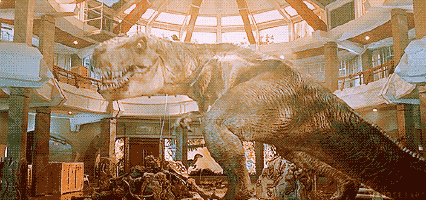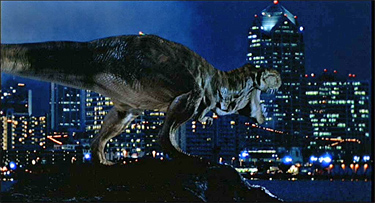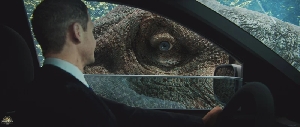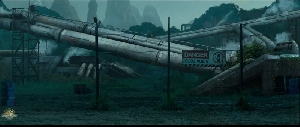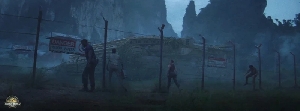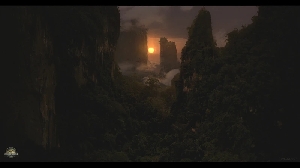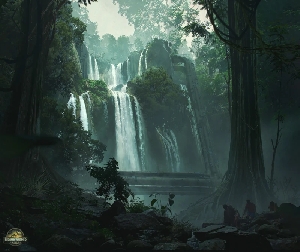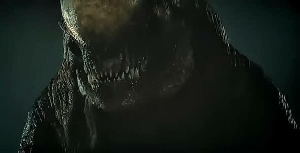Info on the "new" Spinosaurus
Dinosaurs Forum Topic

Carnosaur
MemberCompsognathusNov 26, 20143423 Views8 RepliesI got this a few days after the new material was described and the nat geo exhibit had been out for a few days.
Here's an initial paper describing new finds:
http://www.sciencemag.org/content/suppl/2014/09/10/science.1258750.DC1/Ibrahim.SM.pdf
You can read it in its entirety there ^ But i'll post relevant sections n what have you.
"Many specimens have been referred to Spinosaurus aegyptiacus based on overlap or
similarity of the bones to those originally described by Stromer (5, 11).
The neotype specimen is going to be housed at the FSAC (Casablanca). New isolated
specimens of S. aegyptiacus included here are housed in the University of Chicago
Research Collection:
UCRC PV4 Left dentary mid section with roots lacking crowns (subadult).
UCRC PV5 Mid caudal vertebra.
UCRC PV6 Distal caudal vertebra.
UCRC PV7 Distal caudal vertebra.
UCRC PV8 Left digit I-1 manual phalanx.
Nasals with a fluted crest referred to Spinosaurus and housed in the UCRC were
described in the past (6)
"...We also refer a large humerus (NMC 41852), described and figured by Russell (1996) as
an indeterminate theropod specimen to Spinosaurus. As noted by Russell (1996), it
differs from humeri of other theropods, and appears to be surpassed in size only by the
humeri of Therizinosaurus and Deinocheirus. It is unlikely that NMC 41852 belongs to
one of the other Kem Kem theropods. In Deltadromeus the humerus is more slender and 5
elongate (7). The humeri in allosauroids (such as Carcharodontosaurus) are
proportionally much shorter, as are those of ceratosaurs. It is noteworthy that NMC
41852, which is missing the distal and proximal ends, compares quite favourably with the
humerus of Baryonyx, the only notable difference being that the humeral shaft is more
elongate in the former. The widely expanding distal margin however, suggests a similar
outline to that of Baryonyx. Furthermore, the height of the deltopectoral crest and the
internal tuberosity is the same in both specimens. The proximal end also appears to be
expanding posteriorly in a similar way. Increasing the humerus of Baryonyx to about
twice its size (several cranial remains of Spinosaurus are about twice the size of
corresponding elements in Baryonyx)"
"... That Spinosaurus is a very large theropod, and very likely the longest theropod in
the Kem Kem by a considerable margin further adds to the likelihood of this
identification. Considering that no evidence exists for an as yet unknown very large taxon
with a giant humerus, it is most parsimonious to refer this specimen to Spinosaurus in the
light of the noticeable morphological similarities with Baryonyx. We propose that the
giant humerus NMC41852 is referable to Spinosaurus"
(Basically S. aegyptiacus and B. walkerii are very similar overall morphilogically-- New base for estimations?)
"... Recent excavation of a partial subadult skeleton that preserves portions of the skull and postcranial skeleton provides a long-awaited opportunity to designate a neotype for S. aegyptiacus. The find was made by a local collector in 2008, when one of us (NI) was leading field work in the
Kem Kem beds...The neotype specimen can be referred to S. aegyptiacus based on the very similarform of the dorsal vertebrae, including the long, pinched hour-glass shaped centra and thehypertrophied neural spine with its flared base, narrow mid-section and surficial striations."
Emended Diagnosis: Spinosaurid with adult body length ~15 m characterized by the
following cranial features: external naris and narial fossa small and retracted near the
orbit on the side of the posterior snout; premaxilla excluded from the border of the
external naris...(this goes on for a bit describing material attributed to S. aegyptiacus)
"...Although hundreds of isolated bones and teeth of S. aegyptiacus are in collections around
the world, a few specimens are more complete and thus have garnered attention.
“Spinosaurus B”. Stromer designated bones found in close association as “Spinosaurus
B” (2), a partial skeleton that was entirely destroyed in WWII. The unusual proportions
of the neotype (reduced pelvis size and short hind limb length compared to the axial 10
column) are also present (and nearly identical) in this specimen (fig. S2), suggesting that
it composed a second associated individual of S. aegyptiacus."
(this is stating that Sigillmassasaurus Brevicolis; "Spinosaurus B" is indeed an individual of S. aegyptiacus.)
Spinosaurus maroccanus. This species was based on a single supposed proportional
difference using measurements given by Stromer (11). We regard this difference as an
artifact of differing ways to measure opisthocoelous vertebrae. Following the conclusions
of previous studies (6, 13). We regard this species as a nomen dubium.
(basically there's doubt this is even Spinosaurus)
"...Based on the oxygen isotope composition of fossil remains, Amiot et al. (48) suggested
semiaquatic habits in spinosaurids, similar to those of modern day crocodilians and
hippopotamuses. Because not all samples provided a clear result (48), and because of a
lack of body fossils recording adaptations for a semiaquatic lifestyle, these intriguing
results could not be evaluated or tested."
I cannot copy the pictures out of the study for some(obvious) reason, but the feet are oddly tetradactyl in nature -- an adaptation to waking over mud, essentially. This is another indication of S. aegyptiacus being semi aquatic in nature.
Well, that's the end of my little dissection...comment your thoughts down below! Certainly some interesting stuff guys :D
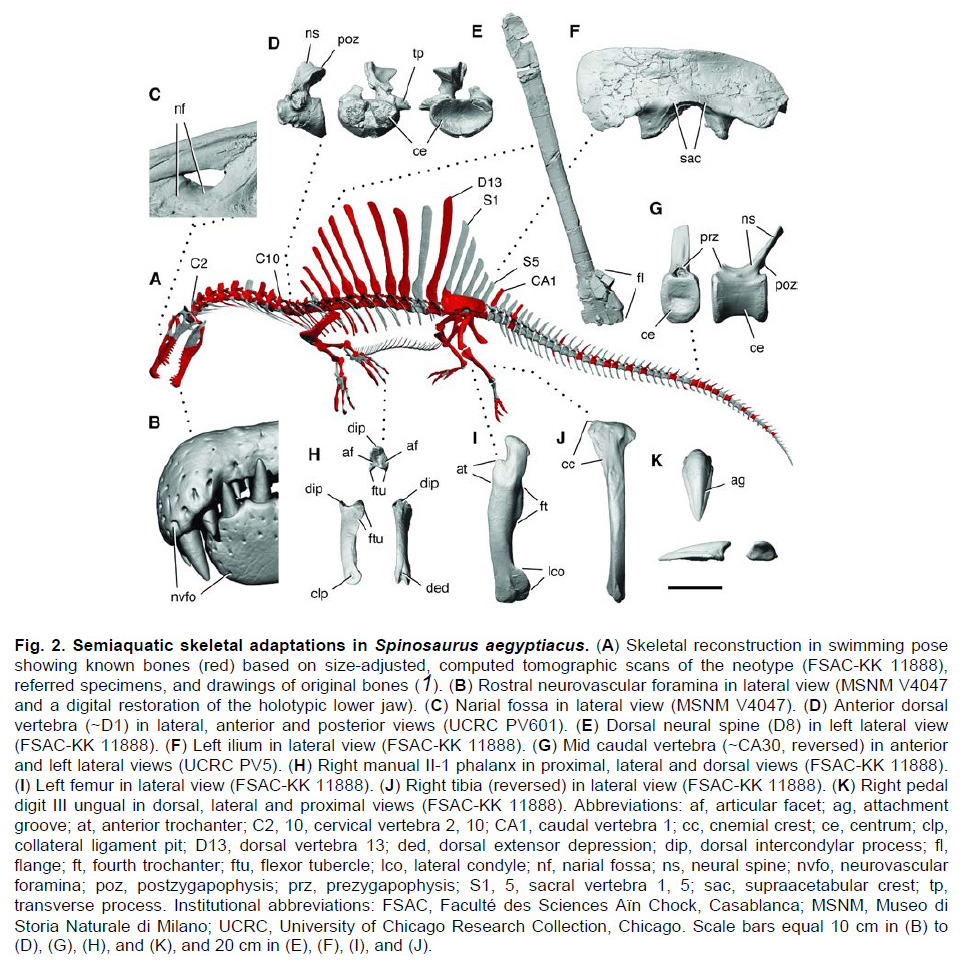
Nature doesn't deceive us; it is we who deceive ourselves.
Replies to Info on the "new" Spinosaurus
Hey Guest, want to add your say?
Are you an avid Jurassic World fan looking for a dedicated online community of likeminded fans? Look no further! Create your own profile today and take part in our forums and gain XP points for all the content you post!



